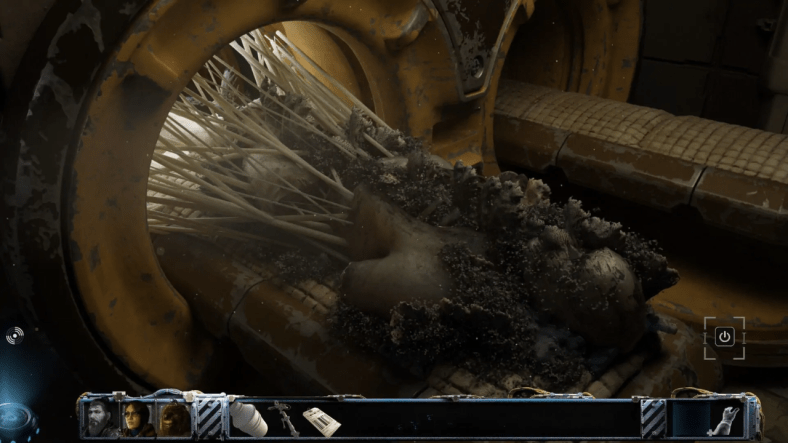‘Stasis: Bone Totem’ Is A Breath Of Fresh Air For Point-And-Click Horror

I wouldn’t consider myself to be a purist. Much like with film remakes, I am more than accepting of breaking from tradition or evolving on that which came before. I like my games and their influences, experimental and messy, which often yield the most memorable experiences. Take point-and-click adventure games. A genre unquestionably filled with timeless classics such as Detention, Planescape: Torment, Sanitarium, and more. But I, for one, was yearning for an experience that bucked the status quo. That evolved on tried and true mechanics for a more modern palette while still abiding by some of the frameworks of the genre. And then I became entangled with Stasis: Bone Totem, which dragged me to the dread-filled depths of the ocean floor.
Developer Brotherhood Games has delivered a staggering piece of aquatic horror that champions the genre’s roots while making a significant distinguishing mark on the genre. The premise is simple: A husband and wife salvaging team (accompanied by their cybernetic toy bear Moses) discover a decrepit oil rig in the Pacific Ocean. What initially resembles a payday is a nightmare that leads them to a secret underwater facility filled with the remnants of experiments gone awry.
Never before have I encountered a premise designed in a lab based solely on my spooky interests, like Stasis: Bone Totem. It isn’t just that aquatic horror happens to very much be my thing, but it is how Brotherhood Games meticulously crafts this dread-inducing world and places mechanics within it, allowing the game’s singular tale to be told that continually impresses.
William Eubank’s slept-on aquatic horror film Underwater is a clear reference point for most horror fans. A film that captured the dread of being housed seven miles under the sea and the liminal dread that stems from that (merman continuously hunting you is also somewhat problematic). And while Stasis: Bone Totem features no combat, the game’s setting is an inherently hostile and unnerving underwater tomb to explore.
Discover the remains of failed experiments and having to scrape the ramifications of those failures off of floors and monitors is just as unsettling as seeing a finned foe peeking around the corner. It makes for a game that players can take their time with but still have a sense of urgency to solve the next puzzle much quicker. To stall slows their progression of returning home. This is something I have never truly experienced in a point-and-click adventure game, and it serves as a basis for how slight tweaks on tried and true mechanics and settings can yield new and exciting results within the genre.
Stasis: Bone Totem‘s lack of emphasis on party proximity is the most significant deviation from traditional party-based adventure games. Party members can often stray as far as another member can throw them. Typically, if I wanted to pass an item to another party member, they must be next to one another. This can make some adventure games tedious, given the logistics of constantly shepherding multiple party members together. Stasis: Bone Totem does away with this thanks to the quantum storage device, which allows party members to pass items between one another for use freely or to alter them.
This allows the world of Stasis: Bone Totem to feel larger than it is, as most of the time, your party members will be scattered around the facility. Party members being spread around the facility allows them to explore environments with puzzles they may or may not be attuned to their specific skill sets.
Early on, the player comes across a door too small for a human to pass through. Do not fear; you can send your small-statured party member Moses to explore ahead. Once inside, Moses discovers a turret that requires a data disc to access, of which there is none in sight. However, your other part member, Charlie, finds a data disc in a separate part of the base and quickly sends it to Moses via the quantum storage device. Moses then can bypass the security and unlock a door for the others to follow.
Eliminating the laborious nature of backtracking in favor of this new intuitive system allows the individualistic nature of party members to shine. Each party member can also uniquely manipulate items or parts of the environment. Mac can break things apart to reveal hidden utilizations. Charlie can repair items to make new ones. And Moses is a computer whiz capable of traversing small spaces and areas that humans cannot.
Furthermore, the individualistic nature of party members is reflected in their perception of the world of Stasis: Bone Totem. These genuinely stunning environments are filled with descriptive flavor text, giving them a sense of space outside of just dread-inducing set dressing. If you never knew a filing cabinet or pile of garbage could be engaging, you’ve never heard it described by a cybernetic build-a-bear. Each party member perceives things differently, which makes them feel more reactionary to the world around them than the typical generic flavor text players are used to. In a year with countless high-profile releases, it is a shame that a gem such as Stasis: Bone Totem has received little fanfare outside of the game’s initial release window. But, it serves as another example to look past the big AAA releases, as there are plenty of worthwhile horrors within the indie space.
Categorized:Editorials Horror Gaming

